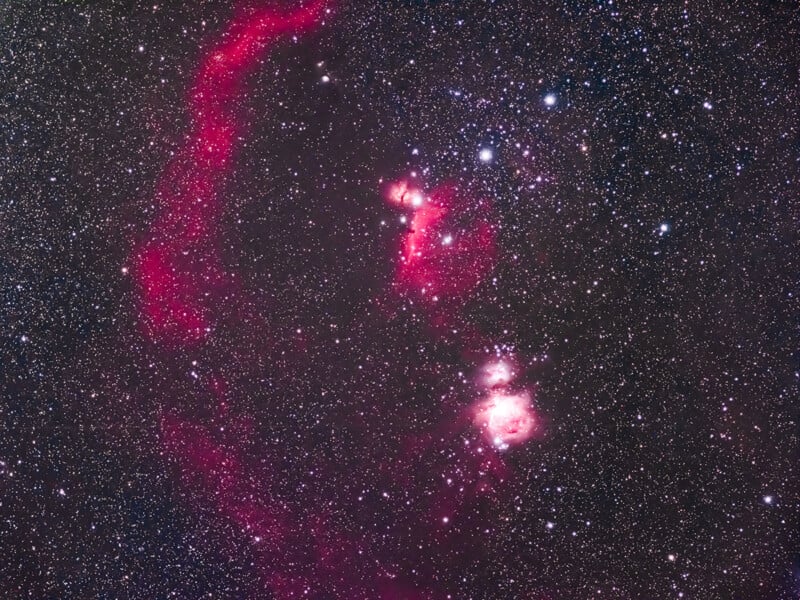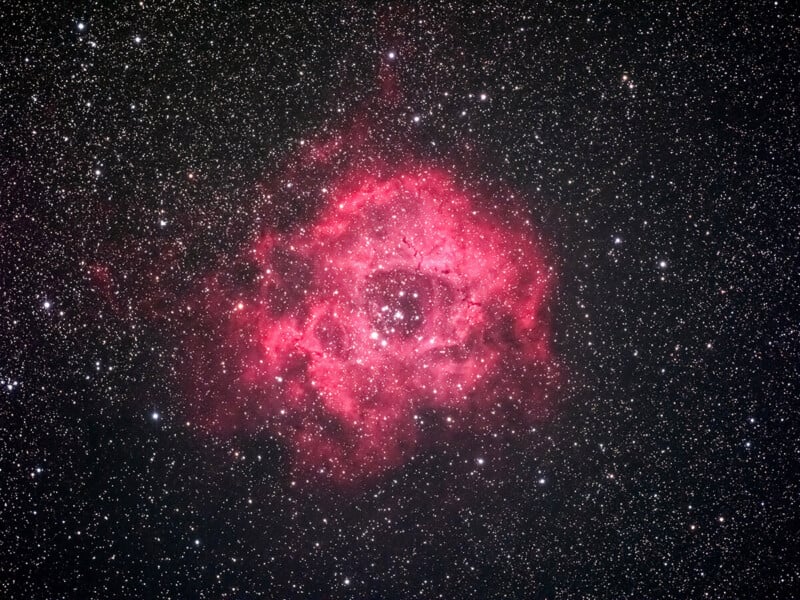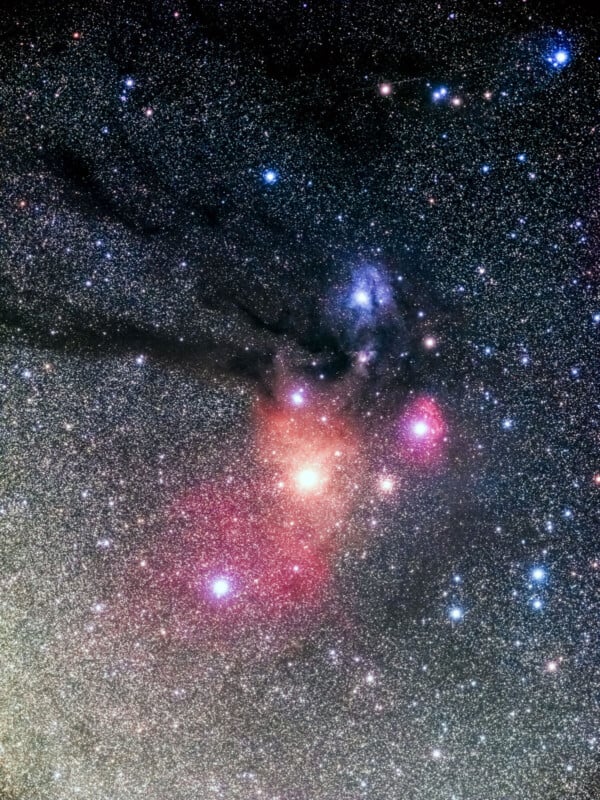![]()
OM System quietly launched the E-M1 Mark III Astro in Japan this week, a camera that is nearly the same as the base E-M1 Mark III save for the infrared (IR) cut filter that allows 100% transmittance of Hα Radiation, allowing for the capture of vivid red celestial images.
The camera is described as dedicated for astrophotography (OM System notes that it should not be used for conventional capture) thanks to an optimized IR cut filter located in front of the image sensor which allows for the capture of bright red nebulae that the many astrophotographers like to photograph. It has a similar design goal as the Nikon D810a did.
Hα Radiation, hydrogen-alpha, is a deep red visible line of the hydrogen atom with a wavelength of 256.28 nanometers (656.46 nm in a vacuum). In photography, Hα filters are used to reduce the effects of light pollution and can be used to photograph celestial bodies like nebulae as well as allow for the capture of the Sun’s atmosphere.
In addition to the IR filter which can capture Hα radiation, OM System is touting the E-M1 Mark III Astro as combining two more features that make it especially useful for astrophotography: the High-Res Shot in-camera stacking image capability and a custom mode that includes settings designed for starry sky capture.

High-Res Shot uses in-camera computational photography to capture multiple photos of a scene and combine them into an ultra-high-density pixel photo. OM System has two variants of this function: one that uses a tripod and one that can be used handheld (called Handheld High-Res Shot). In this case, OM System says that using the Handheld High Res. Shot mode on a tripod or equatorial mount allows the stacking process to not only provide high resolution but also reduce noise.
“The ‘Handheld High Res Shot’ function on the E-M1 Mark III uses the slight misalignment that occurs during shooting to generate a high-resolution photo of approximately 50 megapixels from 16 shots,” OM System says.

“Since the images are aligned one by one when compositing, the camera is fixed to a tripod when taking ‘Handheld High Res Shot’ shots to generate a composite image in which the movement of the stars due to their diurnal motion has been corrected. In addition, when using an equatorial mount, the composite image is generated in which the misalignment of the stars caused by tracking errors can be corrected.”
The aforementioned custom modes that are available can be accessed from the C1 and C2 options on the mode dial. C1 setting activates the Handheld High Res Shot while C2 sets the Drive mode to Single Shot along with image stabilization set to S-IS AUTO to support handheld shooting.
“In addition, while it is common to finish astrophotography by adjusting the color tone etc. in the post-shooting development process, the custom modes C1 and C2 also have settings suitable for astrophotography, such as white balance and tone curve, so that natural images can be obtained even when output from the camera,” OM System adds.
The E-M1 Mark III Astro also has Starry Sky autofocus and live composite for shooting star trails.

While the IR cut filter is the most notable hardware change, OM System also is making two body-mounted filters that can be attached in front of the sensor but behind the lens which allows for the same visual effect even if the lens is changed: a light pollution filter and a soft filter. Both can be attached at the same time and can be used with super-wide or even fisheye lenses because of their position behind the optic.
“Light pollution filters cut out light from artificial light sources such as city lights and street lamps. This prevents color casts in the night sky, allowing you to capture the original beauty of nebulae and constellations more vividly,” OM System explains. “The high-resolution M.Zuiko Digital lenses form a clear point image of stars, which are ideal light sources. On the other hand, because many stars are recorded as point images, representative stars may not look impressive. By using this soft filter, you can achieve the effect of blurring and emphasizing point light sources, making brighter stars appear larger and more blurred, and the colors of the stars are also emphasized, making the stars and constellations stand out.”

The OM System E-M1 Mark III is not considered a “new” camera in the United States anymore, and OM System is likely repurposing older stock for this specialized use case — that certainly would explain the appearance of the “Olympus” name on the camera.
Additionally, OM System tells PetaPixel that it is initially launching the E-M1 Mark III Astro in the Japanese market for 327,800 yen (about $2,030) which includes the two body filters, with intentions to introduce it later this year in Australia. Currently, there are no plans to release it in North America.
Image credits: OM System
